If you have a toddler, you know how curious and energetic they can be. One of the ways they explore the world around them is by throwing things. While it’s a normal part of their development, it can also be frustrating and even dangerous. In this article, we’ll discuss why toddlers throw things and what you can do to address the behavior.

Understanding toddler behavior is key to addressing throwing. Toddlers are still learning how to communicate their needs and emotions, and throwing can be a way for them to express frustration or anger. It can also be a way for them to experiment with cause and effect and test their physical abilities. By understanding the reasons behind the behavior, you can respond in a way that is helpful and supportive.
Common throwing scenarios include throwing toys, food, and other objects. While it’s important to set boundaries and teach your toddler that throwing is not acceptable in certain situations, it’s also important to provide opportunities for safe throwing. For example, you can encourage your toddler to throw soft balls or stuffed animals in a designated area. By redirecting their throwing behavior to a safe and appropriate outlet, you can help them develop their physical skills while keeping them and others safe.
Key Takeaways
- Toddlers throw things as a way to explore and communicate.
- Understanding the reasons behind the behavior can help you respond appropriately.
- Providing safe opportunities for throwing can help redirect the behavior.
Understanding Toddler Behavior
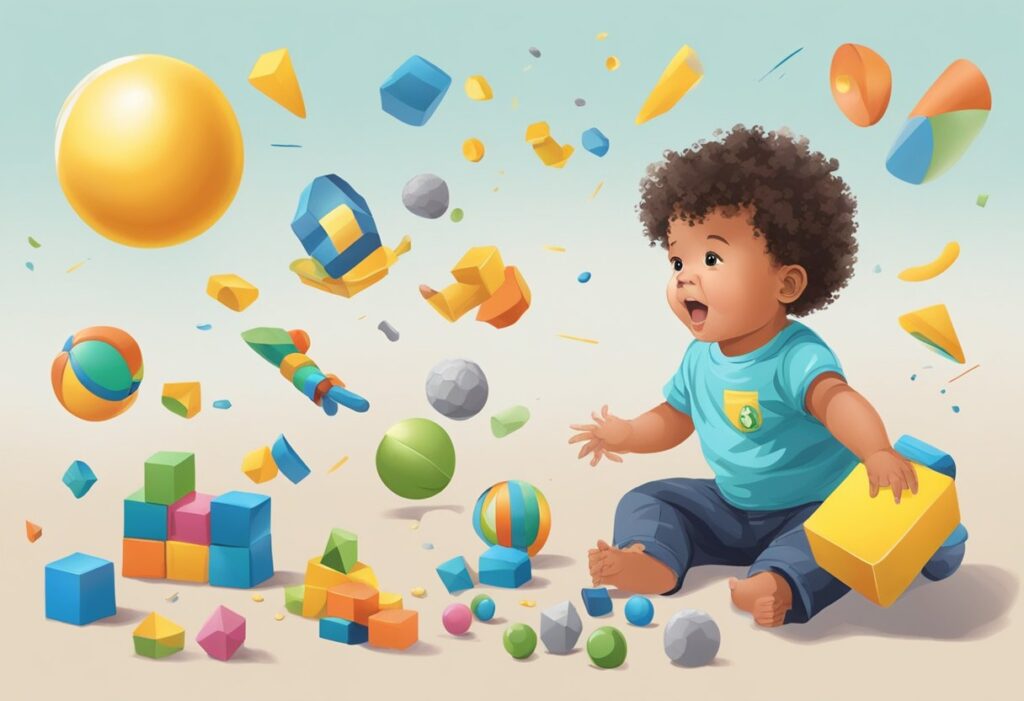
As a parent, it can be frustrating when your toddler throws things, but it’s important to understand that this behavior is a normal part of their development. Toddlers are still learning how to communicate their emotions and may resort to throwing things as a way of expressing themselves.
Communication and Emotions
Toddlers may throw things when they are feeling frustrated or upset. They may not have the language skills to express their emotions, so throwing objects can be a way for them to release their feelings. It’s important to validate their emotions by acknowledging how they feel. You can say things like, “I can see that you’re feeling angry right now.”
Motor Skills and Curiosity
Toddlers are also developing their motor skills and learning about cause and effect. They may throw things simply because they are curious about what will happen when they let go of an object. They may also be exploring the concept of gravity and testing their own abilities.
To help prevent throwing behavior, it’s important to provide your toddler with plenty of opportunities to explore and play with objects that are safe to throw. You can also redirect their attention to other activities when you notice them becoming frustrated or upset.
Remember that your toddler is still learning how to express emotions and respond emotionally to situations. By understanding their behavior and providing them with positive outlets for their energy and curiosity, you can help them develop healthy coping mechanisms and communication skills.
Common Throwing Scenarios
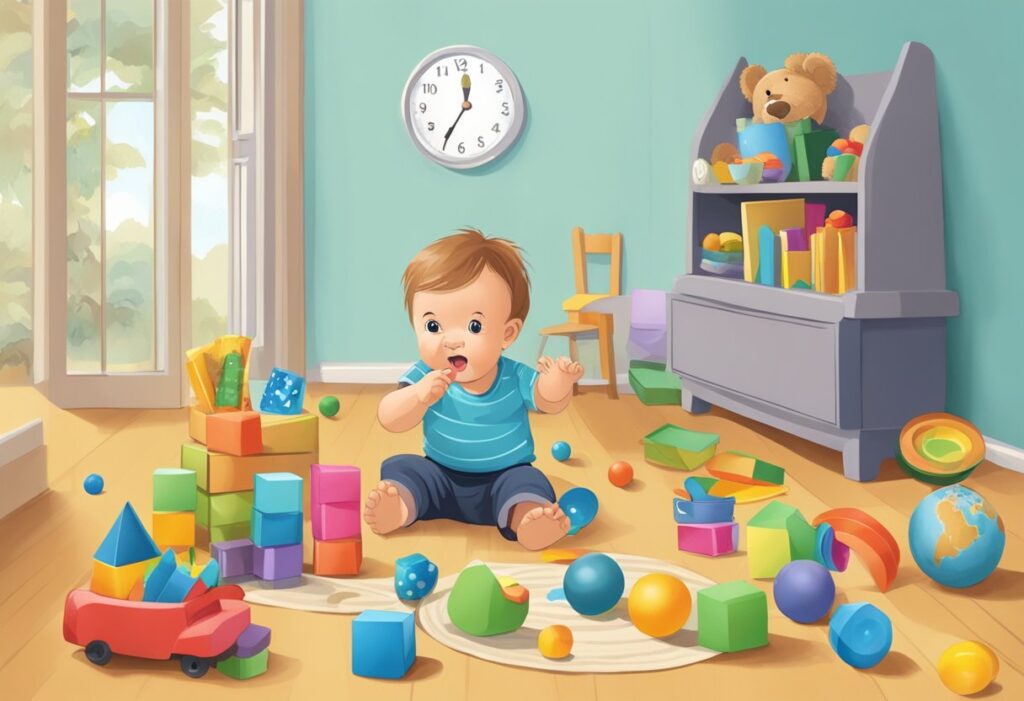
Toddlers are notorious for throwing things, and it can be frustrating for parents and caregivers to deal with. Here are some common throwing scenarios and tips for how to handle them.
At Mealtime
Throwing food during mealtime is a common habit among toddlers. It can be messy and wasteful, but it’s also a normal part of their development. To discourage this behavior, try the following:
- Set clear boundaries: Let your toddler know that throwing food is not acceptable.
- Stay calm: Don’t react with anger or frustration, as this can reinforce the behavior.
- Offer alternatives: Provide your toddler with appropriate toys or objects to play with during mealtime.
- Involve them in cleanup: Encourage your toddler to help clean up any messes they make.
During Playtime
Throwing toys during playtime is another common behavior among toddlers. While it can be fun for them, it can also be dangerous if they throw hard or heavy objects. Here are some tips for dealing with this behavior:
- Set boundaries: Let your toddler know which toys are okay to throw and which are not.
- Provide alternatives: Offer soft balls or other toys that are safe for throwing.
- Demonstrate proper throwing technique: Show your toddler how to throw objects safely and appropriately.
- Encourage sharing: Encourage your toddler to share toys with others instead of throwing them.
At Bedtime
Throwing objects at bedtime can be a sign that your toddler is not ready to sleep yet. Here are some tips for dealing with this behavior:
- Establish a bedtime routine: Stick to a consistent bedtime routine to help your toddler wind down and prepare for sleep.
- Remove distractions: Remove any toys or objects that your toddler may be tempted to throw.
- Offer comfort: Provide your toddler with a comfort object, such as a stuffed animal or blanket, to help them feel secure.
- Stay calm: If your toddler does throw something, stay calm and gently remind them that it’s time to sleep.
By following these tips, you can help your toddler develop better habits around throwing things and create a safer, more peaceful environment for everyone.
Addressing the Issue
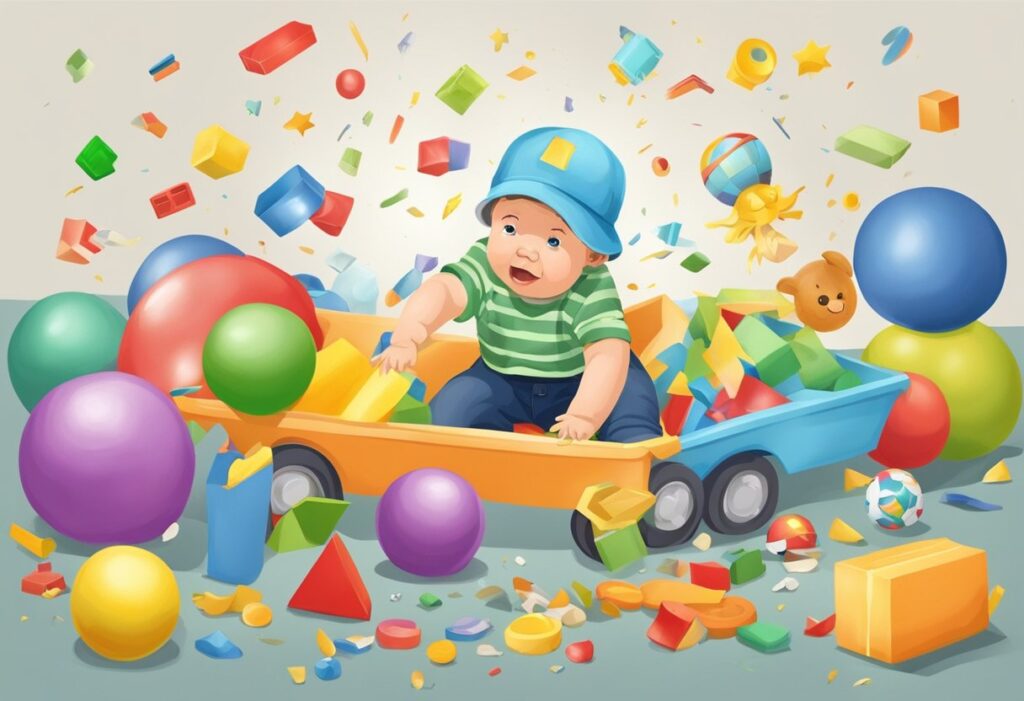
If your toddler has developed a habit of throwing things, it can be frustrating and even dangerous. However, with the right approach, you can help your child learn appropriate behavior and prevent future incidents. Here are some tips for addressing the issue:
Teaching and Discipline
Teaching your child appropriate behavior is an essential step in addressing the issue. Explain to your toddler that throwing things can be dangerous and that it’s not okay to throw things at people or breakable objects. Use simple language and be patient in your explanations.
When your child throws something, it’s important to discipline them appropriately. You can use time-outs, taking away privileges, or other methods that work for your family. However, it’s important to be consistent and not use physical punishment, as this can be harmful and ineffective.
Setting Boundaries
Setting boundaries is another important step in addressing the issue. Make it clear to your child what is and isn’t okay when it comes to throwing things. For example, you might allow your child to throw a ball outside, but not inside the house.
It’s also important to be consistent in enforcing these boundaries. If your child throws something when they know they’re not supposed to, follow through with the appropriate discipline. This will help your child learn that there are consequences for their actions.
Positive Reinforcement
Positive reinforcement can be a powerful tool in addressing the issue of throwing things. When your child shows appropriate behavior, be sure to praise and reward them. This can be as simple as saying “good job” or giving them a small treat or toy.
By using positive reinforcement, you can help your child learn that appropriate behavior is rewarded, which can motivate them to continue to behave well.
In conclusion, addressing the issue of toddler throwing things requires a combination of teaching, discipline, setting boundaries, and positive reinforcement. By using these strategies consistently, you can help your child develop good behavior and prevent future incidents.
Dealing with Outbursts
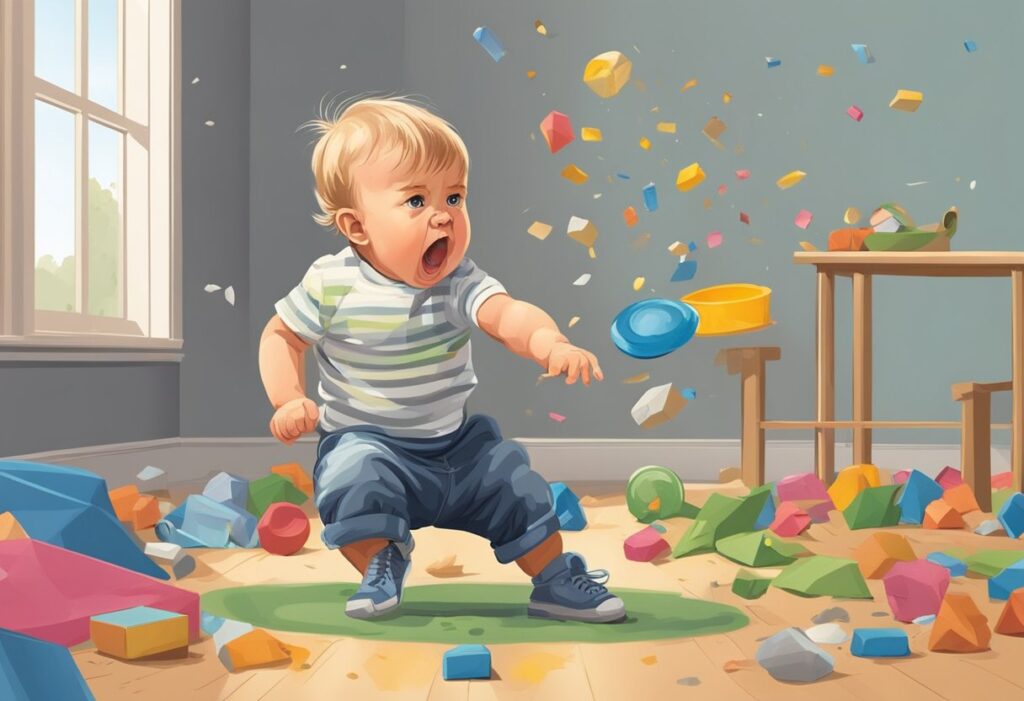
Dealing with toddler outbursts can be challenging, but with patience and effective coping skills, you can manage them. Here are some tips to help you deal with your toddler’s outbursts.
Managing Tantrums
Tantrums are a common form of outburst in toddlers. When your toddler is having a tantrum, it’s important to stay calm and patient. Try to understand why your toddler is upset and address the issue calmly. If your toddler is crying, kicking, or screaming, try to gently hold them and comfort them.
If the tantrum escalates, remove your child from the situation and enforce a timeout. Select a boring timeout spot, such as a chair in the living room or the hallway. Wait for your child to calm down, and consider giving one minute of timeout for every year of your child’s age.
Preventing Outbursts
Preventing outbursts is key to managing toddler behavior. Here are some tips to help prevent tantrums and other forms of outbursts:
- Be consistent with rules and consequences.
- Provide plenty of positive attention and praise for good behavior.
- Set realistic expectations for your child’s behavior.
- Offer choices to give your child a sense of control.
- Keep your child well-rested and fed.
- Distract your child with a fun activity when you sense an outburst coming.
Remember, dealing with toddler outbursts takes patience and practice. With these tips, you can help your child learn to manage their emotions and behavior.
When to Seek Professional Help
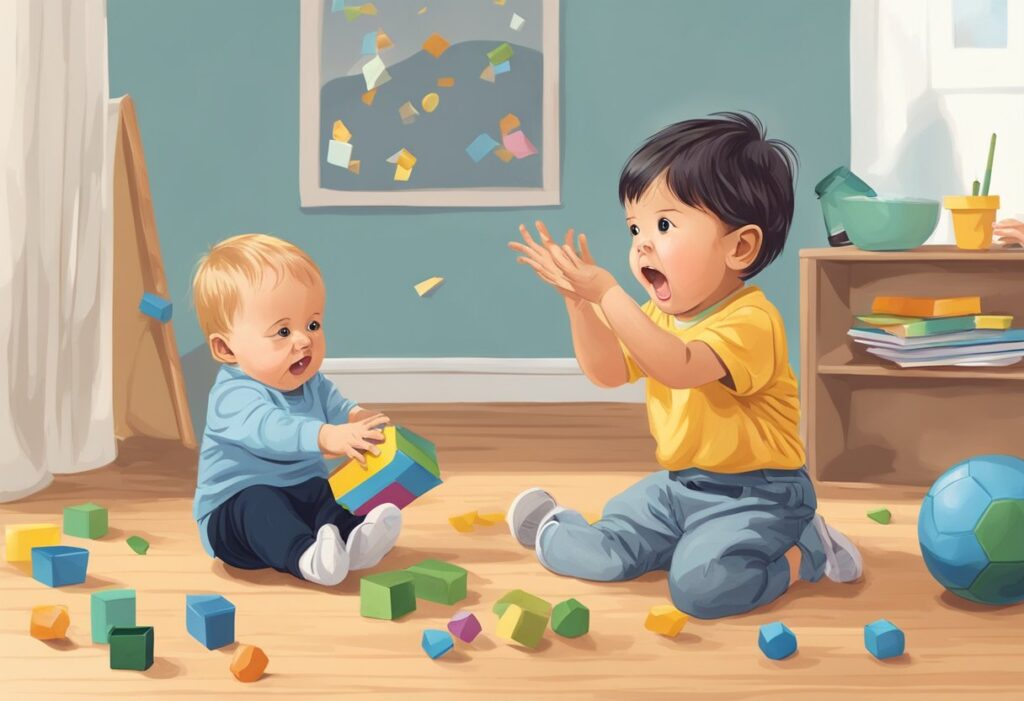
Dealing with a toddler throwing things can be a challenging task for parents and caregivers. While throwing things is a common behavior among toddlers, it can be dangerous and may cause harm to themselves or others. If your child’s throwing behavior is severe and persistent, it may be time to seek professional help.
One option is to speak with your child’s pediatrician. They may be able to provide advice on how to manage your child’s behavior or refer you to a specialist who can help. A pediatrician can also rule out any underlying medical issues that may be contributing to your child’s behavior.
Another option is to seek professional help from a therapist or counselor who specializes in child behavior. They can work with you and your child to develop strategies to manage the behavior and address any underlying issues that may be contributing to it.
It’s important to seek professional help if your child’s throwing behavior is attention-seeking or if it’s causing harm to themselves or others. Remember to be patient and consistent with your child, and seek help if the behavior persists.





